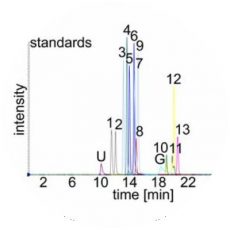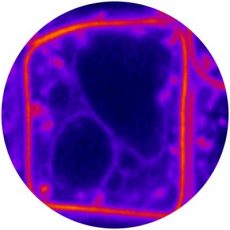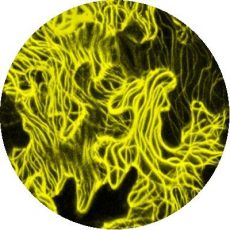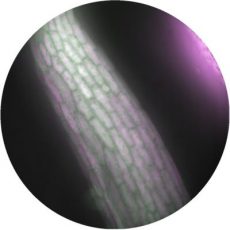In the McFarlane Lab, we use a variety of techniques and approaches to ask and answer questions about plant growth and development and the fundamental mechanisms by which plants sense their environment and adjust their growth in response. We are motivated to undertake this work by our belief that understanding plant growth and development can improve agricultural productivity and generate renewable biomaterials, which can provide a greener future for everyone. Our work is generously supported by a variety of local, provincial, national, and international funding agencies. Click the icons below to read more about some of our projects.
Why study plant cell walls?
Plant cell walls provide us with food, clothing, shelter, and energy. Cell walls make up most of the fruits, vegetables, and grains that we eat; wood and cotton fibers are almost entirely composed of cell wall material; and plant cell walls represent promising material for next-generation biofuels and renewable biomaterials like bioplastics. However, modifying plant cell walls by traditional breeding or biotechnology often decreases plant yield. This is because plants sense changes to the cell wall by largely unknown mechanisms, called “cell wall signalling” and plants often respond to cell wall signals by limiting their growth. Modifying plant cell walls for improved biomass production or pathogen resistance may inadvertently activate these pathways. By understanding the mechanisms of cell wall signalling, it may be possible to improve plant cell walls without decreasing yield. This work is important for current and future challenges in Canada, including agricultural sustainability, renewable energy production, and food security.
What are we actually doing in the lab?
Here are some images of the techniques and approaches that we use in the lab:























mechanisms of cell wall signalling
Plants must monitor the status of their cell walls. Environmental changes, pathogen attack, and developmental programs can all alter the cell wall. So, how do plants sense changes to their cell walls and how are these signals transmitted into the cell? We are combining a novel forward genetic screen with large-scale studies of plant responses of cell wall signalling in order to uncover the mechanisms by which plants sense and respond to cell wall signals.
signal cross-talk and isolation
Because plants are rooted in place, they cannot simply hide from predators or escape stressful environmental conditions. The first line of defense a plant has against the outside world is its cell wall and changes to the cell wall are often the first sign of predators or plant infection. However, important developmental programs, such as root branching and pollination also initiate changes to the cell wall. So, how can a plant tell right from wrong? We are using reverse genetic screens and chemical biology to determine whether cell wall signals are isolated from other signalling pathways or whether there is cross-talk between these signals.


cell wall secretion and remodelling
Cell wall remodelling is an important consequence of cell wall signalling. Once they have sensed cell wall changes, plants need to modify or fortify the cell wall in response. However, some cell wall components are made inside the cell, while others are made at the interface between the cell and the cell wall. So, how are these spatially separated processes coordinated to ensure that the correct modifications to the cell wall will occur? We are using a combination of dynamic live cell imaging, immunodetetection of cell wall components, and biochemistry to track changes to the cell wall in response to cell wall signalling.
Golgi structure and function
Many cell wall components are synthesized inside the cell (in the Golgi apparatus) and must be secreted via vesicle trafficking to reach the cell wall. Changes to the structure or function of the Golgi apparatus can result in dramatic consequences for cell wall composition and structure, and changes to the cell wall can also affect Golgi structure. So, how are these two different cellular structures, the Golgi apparatus and the cell wall, communicating? We are using high-speed live cell imaging of fluorescently-tagged proteins, high-resolution electron microscopy, quantitative image analyses, and a catalogue of plant mutants to study the dynamic relationship between the Golgi apparatus and the cell wall.

Funding
We gratefully recognize funding from the following sources:
Ontario Early Researcher Award (2022-2027)
NSERC Alliance International Catalyst Grant (2022-2023)
NSERC Research Tools and Instruments Grant (2022)
NSERC Discovery Grant & Discovery Launch Supplement (2020-2025)
Connaught New Researcher Award (2020-2021)
Canada Foundation for Innovation John R. Evans Leaders Fund (2020-2022)
Ontario Research Fund Research Infrastructure (2020-2022)
Canada Research Chair (2019-2024)
University of Toronto startup funds (2019-2024)
Australian Research Council Discovery Project (2019-2021)
Australian Research Council Discovery Early Career Researcher Award (2017-2019)